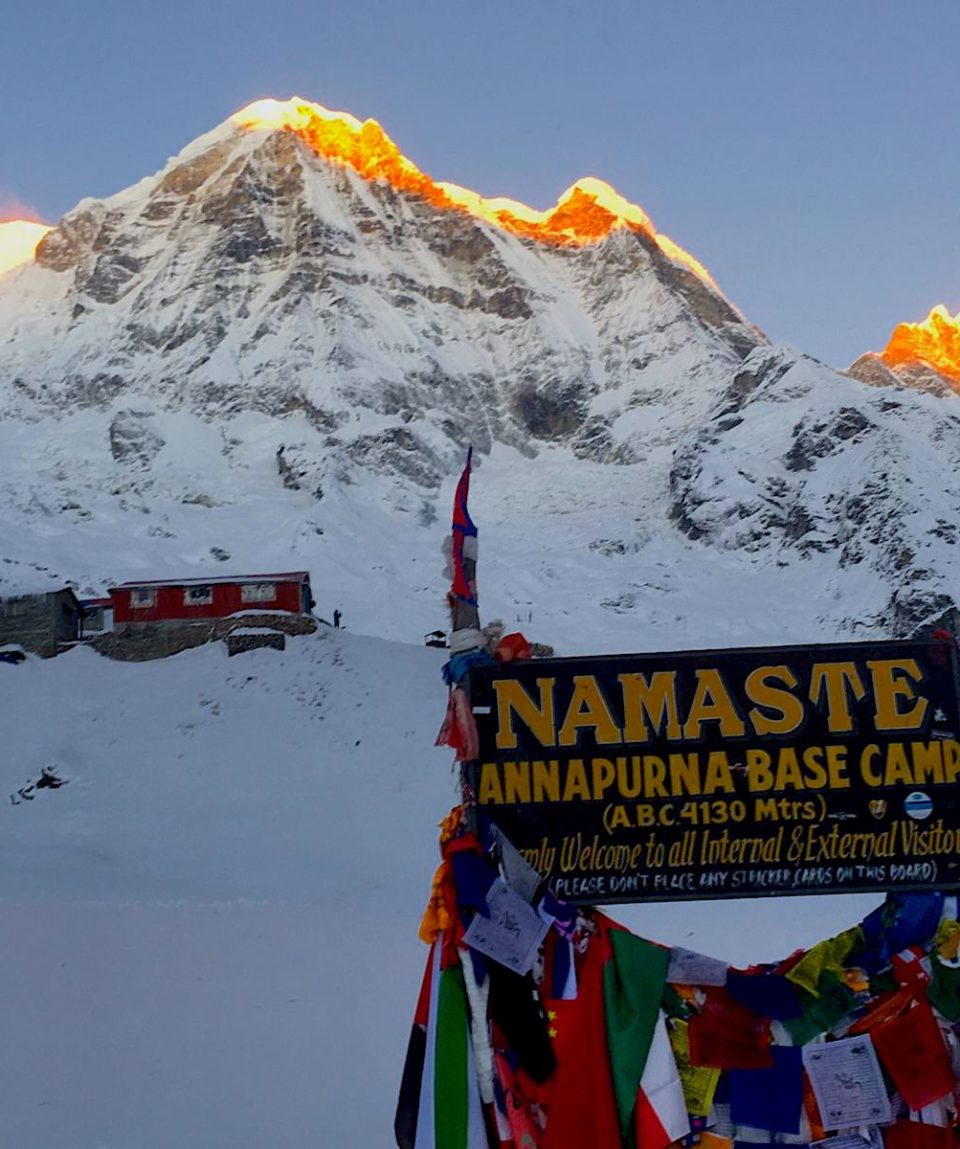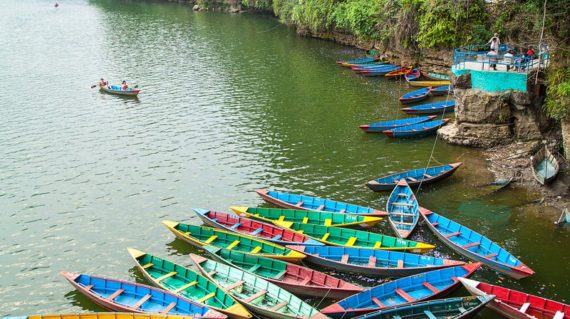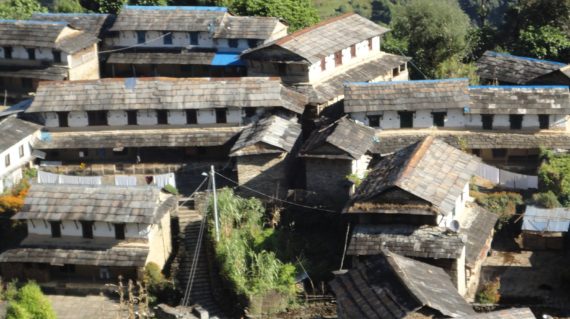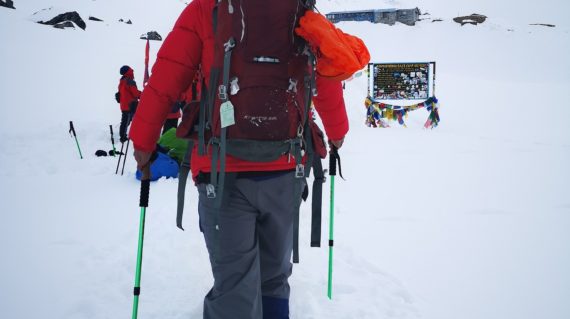
Annapurna Base Camp Trekking
fromAnnapurna Base Camp Trekking (ABC) takes you to the base camp of Mount Annapurna, the world’s tenth tallest mountain (8091m). ABC is a spectacular walk across unique scenery and culture, consisting of rich mountain vistas, terraced farms, tiny Gurung settlements, and a vast diversity of flora and animals, located at a height of 4130m/13549ft.
Mt. Machhapuchhre (6993m), which is adored by Nepalese for its unique beauty, is the trek’s final endpoint. Although you will not be climbing the Fishtail Mountain, you will come very near to it. You’ll go up close and personal with Annapurna I, Annapurna South, Gangapurna, and Hiunchuli in addition to Machapuchare.
The Annapurna Base Camp lies directly across the valley from the Annapurna Glacier. When you glance up from the edge of the glacier, the Annapurna massif is in front of you. When your sight falls upon Annapurna I, III, and South, Gangapurna, Gandharvachuli, and Machapuchare, they are all there to greet you. As a result, every time you are on this walk is spectacular.
To top it off, even before you begin the trip, it is breathtakingly beautiful. Machapuchare, Annapurna South, and Hiunchuli can all be seen from Ghandruk. Views of the Annapurna range and Machapuchare will accompany you until Sinuwa.
At Dovan, you will be teased by the tip of Machapuchare. Machapuchare comes in all its splendor as you emerge from the forest, past Himalaya and Deurali. This is the point when all of the elegance you’ve seen from afar unites with you and becomes wonderful recollections that you’ll remember for the rest of your life.
You’ll journey through the Annapurna Conservation Area, where you’ll see a diverse range of flora and fauna, in addition to the magnificent views of the Himalayas. Walking through this protected area, which is home to 1,226 flowering plant species, 102 animals, 474 birds, 33 reptiles, and 22 amphibians, may provide you the chance to see something quite unusual.
Coming to the difficulty, you will find it very moderate and you don’t need to be a pro at trekking to complete it. However, there might arise a few issues for those who don’t have experience walking uphill and at high altitudes.
Over the 10 days of the walk, you will have to travel a total distance of 67 kilometers. This contains three days with distances of more than 10 kilometers, the longest of which is 15.5 kilometers from ABC to Bamboo. Then there’s the sheer elevation gain and loss. Starting at just over 7,300 feet at Komrong, the trip quickly ascends to 13,550 feet at the ABC. The trail climbs approximately 4,000 feet in elevation over 10 kilometers on the fifth day of the expedition. This expedition will not be difficult if you can simply overcome these two obstacles.
On the other hand, the optimum seasons to walk to Annapurna Base Camp are from mid-September to November (fall) and March to May (spring).
Autumn trekkers do not have to worry about monsoon rain or the biting cold of winter because it is both post-monsoon and pre-winter. The weather remains warm during the day and cools in the mornings and evenings. The sky remains bright throughout the day, providing breathtaking views of the Annapurna range. In the daylight, the temperature at this time ranges from 12 to 20 degrees Celsius on average.
Similarly, following autumn, spring is an excellent season to go on an Annapurna Base Camp Trekking. It is warm during the day and cools in the morning and evening. Because it is the pre-monsoon/summer season, the days will be warmer than in the winter. The temperature is between 16 and 22 degrees Celsius. Furthermore, it is the flowering season, so the trails will be vibrant and bright. Rhododendron blossoms bloom everywhere, and the woodland turns a deep shade of green.
You have the option of staying in teahouses (mountain lodges) or camping. Teahouses will provide you with all of your basic needs. Whereas in camping we will need to compromise on many aspects.
Having a similar menu in the trail you will be served, authentic Nepalese cuisine most of the time but also, but Tibetan, Continental, Italian, Indian, and other world cuisines, are available for meals in a few tea houses.
For further more information, Contact us today!
-
Reviews 0 Reviews0/5
-
Vacation Style Holiday Type
-
Activity Level Strenuous
-
Group Size Small Group
One of the best parts of this trek is its moderate difficulty. A trek like ABC offers us many things and although we would expect it to be demanding, it is not. Even a little bit of trekking experience will be enough for ABC trek.
The risks of altitude sickness and fever can be undone with a bit of fitness training and resisting the temptation to consume food and drinks that might adversely affect us. All in all, ABC trek is very moderate and can be successfully completed without breaking a sweat — if you seriously consider it.
That being said, we would still be walking quite a lot. Over the 10 days of the walk, we will have to travel a total distance of 67 kilometers. This contains three days with distances of more than 10 kilometers, the longest of which is 15.5 kilometers from ABC to Bamboo. Then there’s the sheer elevation gain and loss. Starting at just over 7,300 feet at Komrong, the trip quickly ascends to 13,550 feet at the ABC. The trail climbs approximately 4,000 feet in elevation over 10 kilometers on the fifth day of the expedition. Thus, if we can get over these two challenges, we wouldn’t actually be breaking any sweat.
On the other hand, the optimum seasons to walk to Annapurna Base Camp are from mid-September to November (fall) and March to May (spring).
Likewise, while trekking ABC, we would be staying at basic teahouses.
Trekking Highlights:
- Lush forests of rhododendrons and oaks
- Perennial rivers like Modi Khola and Kimrong Khola
- Encounter the rural Nepalese lifestyle
- Close encounters with Mount Fishtail and Annapurna Massif
- A night at the laps of Annapurna
Why trek with us?
Quality:
We are assured that the trip highlights would have made you tempted to trail the Annapurna Base Camp, and, with us, we can add glamor to it. For us, quality isn’t just about luxury but a sense of interconnectedness with society. We can guarantee you this interconnectedness. We design our trek in such a way that you won’t just be walking through the trail but making memories with us and the locality. We will interact with the locals, take pictures, have food with them, and make ourselves home.
Giving back to the community:
We are a product of the Nepalese community, and as a part of it, with every journey we explore, we design some kind of activities that ensures the locals will be fully benefited. For our Annapurna Base Camp Trek, we can either donate books and stationery products at school in the rural settlements at Dovan, Chomrong, Tadapani, or Ghandruk(we can do this on any day from Day 5 to Day 7 of our trek). Similarly, we can also donate medical supplies to the camps (from Day 8 to 10). Likewise, we can donate clothes and other items to the Tibetan refugee camp while buying their local arts and crafts (on Day 12, after reaching Pokhara, or Day 17 before traveling back to Kathmandu). This will also allow you to connect to people well and help us evolve more.
- Pick up and transfer to the booked accommodation by Elite Explorer representative from Tribhuwan International Airport Kathmandu. (please look for your full name card outside the arrival hall, +977 985 115 5251 arrival assistance WhatsApp call or message)
- Twin sharing or double bed accommodation with buffet breakfast in Kathmandu and Pokhara.
- Guided, know your surrounding tour in Kathmandu.
- Private vehicle for ground transport in Kathmandu.
- Kathmandu to Pokhara 30miutes domestic flight
- Pokhara Nayapool Private vehicle drive.
- Guided trek by our expert and experienced English-speaking trekking guide. (language guide can be arranged based on your preference.)
- A porter to help carry our trekking bags (trekking bags must not exceed 20 kg, 2 pax combined )
- Locally available breakfast, lunch, and dinner including tea or coffee.
- Basic Mountain Lodges (famously known as tea houses) for accommodation.
- Guide Porter salary remunerations and insurance
- Trekkers Information Management System (TIMS) card
- Necessary documentation and Annapurna trekking permit.
- First aid kit including oxygen meter
- Nayapool to Pokhara ground transportation by a private vehicle.
- Pokhara Kathmandu thirty minutes domestic flight.
- Government tax
- Airport transfer upon completion of the program
- Client personal expenses and bar bill including soft drinks
- Natural Calamities beyond our control and expenses incurred in such rescue services.
- Travel/Medical Insurance
- Lunch dinner in Kathmandu and Pokhara
- Day 01 Arrival in Kathmandu and Transfer to the Hotel
- Day 02 Kathmandu local market guided tour to Annapurna Temple and Ason
- Day 03 Fly from Kathmandu to Pokhara (820m/2,690ft)
- Day 04 Drive from Pokhara to Nayapool (1570m) by a private vehicle, and Trek to Ghandruk (2,012m/6,601ft)
- Day 05 Trek from Ghandruk to Tadapani (2,630m/8,630ft)
- Day 06 Trek from Tadapani to Chomrong (2,165m/7,105ft) 10kms
- Day 07 Trek from Chhomrong to Dovan (2,500m)
- Day 08 Trek from Dovan to Machhapuchhre Base Camp (MBC) (3,700m)
- Day 09 Trek from MBC to Annapurna Base Camp (4,130m/13,550ft)
- Day 10 Trek from ABC to Bamboo (2,350m/7,700ft)
- Day 11 Trek from Bamboo to Jhinu Hot Spring (1,780m/6,393ft)
- Day 12 Trek from Jhinu to Nayapool, and drive to Pokhara
- Day 13 Fly from Pokhara to Kathmandu
- Day 14 Departure
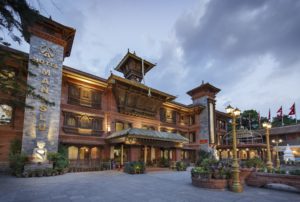
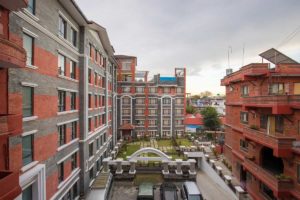
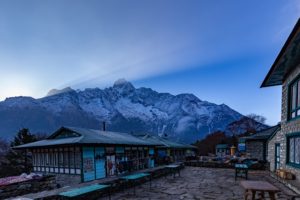
How many hours do we trek each day?
We will trek for six hours on average, but depending on the region you trek in, you might go for nine hours straight, including breaks for meals.
What transportation will it be to the trekking starting point?
Depending on the trekking region, either private transportation or air travel will be used.
Can I leave the things behind before heading for trekking?
Yes, we’ll tag your bag and keep it at your accommodation until you get back. Likewise, you should travel as lightly as possible when trekking.
Is it very cold in Kathmandu on my arrival?
There are four seasons and 300 days of sunshine in Nepal. As a result, Kathmandu’s lowest recorded temperature is -3 degrees Celsius, or 26.6 degrees Fahrenheit. However, while trekking, the temperature may drop to -13 degrees Fahrenheit or -25 degrees Celsius. For more details on what to pack and bring please contact your dedicated travel consultant or you can also contact us via E-mail.
Do I need to be extra careful of altitude sickness?
Our itineraries are made to give you plenty of time for acclimatization, reducing the likelihood that you will have altitude sickness. Every evening before or after dinner, our extremely knowledgeable guide will give us a briefing for the following day’s trekking, including instructions to prevent altitude sickness over 3500 meters. You must notify our guide right away if you have shortness of breath, headache, exhaustion, nausea, vomiting, a rapid heartbeat, or insomnia since altitude sickness can be fatal.
How many kg of bag pack am I allowed to carry?
The greatest option is usually to trek light. The best-recommended backpack weight is 10 kg for trekking bags and 5 kg for carry-on luggage because one must also include basics. (It also serves as the flight to Lukla’s weight restriction.)
Will there be a porter to carry my bag pack apart from the guide?
Yes, a porter will assist you in carrying the trekking backpack packs.
Can you tell me about the food in the mountains?
Most of the food is freshly prepared, but meats may have been stored for a while. Freshly prepared Daal and Bhat, a staple of traditional Nepali cuisine, are the finest.
How basic are tea houses, can I shower every day?
A basic bed, private or shared bathrooms, cold water in the absence of electricity or sunlight, charging the wifi battery, and the absence of a room heater. This is how simple tea houses seem. Further, during the cold winter, the water freezes in the pipe leaving no running water.As mentioned earlier, having a hot shower (or bucket full of hot water) is feasible in most tea houses, however, if unfavorable circumstances like an electricity cut-off occur, you may have to wait to take a hot shower.
Is there wifi or cellular signals in the mountains?
In the tea houses along the trails, there is wifi, however, the signal strength and speed may not be as advertised. On request, Team Elite Explorer will provide you with a local sim card for data subscription.
How about power, will there be charging points?
There will, in fact, be charging ports. Be considerate when charging your electronics as tea houses provide shelter for other hikers as well.
In case of medical issues, how will I get assistance?
Our guide will evaluate the case according to its seriousness, seek advice from the office as necessary, and then decide on the spot whether to transport the patient to the nearest medical facilities or call for help. When trekking in Nepal, kindly make sure to have comprehensive travel medical insurance.
Can 3 years and 80 plus age trek in the mountains?
Every age group can find the ideal trekking trails in Nepal. So every one of any age can hike in the mountains. When working with infants and the elderly, we take extra precautions both in the planning of the itineraries and on the ground.
Lastly, how fit should I be for trekking?
For the trek, you need to be both physically and mentally prepared. The outcome of your adventure entirely rests on you. We advise selecting the trekking routes based on your degree of fitness. There is little doubt that shorter routes are simpler than longer ones. A higher level of fitness will be needed for the longer treks. So, try to be in top physical shape.


